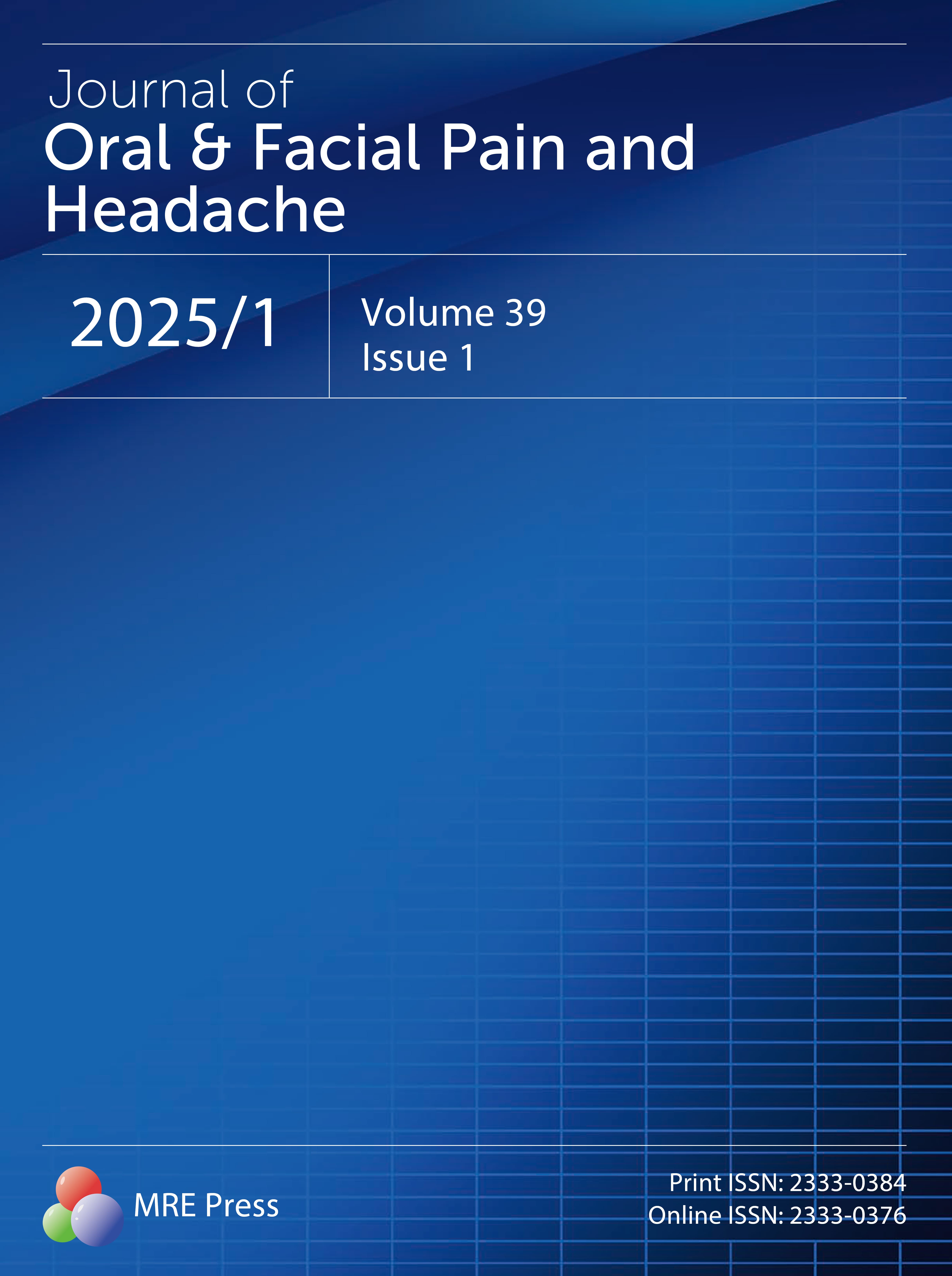Title
Author
DOI
Article Type
Special Issue
Volume
Issue
Article Menu
Export Article
More by Authors Links
Article Data
- Views 599
- Dowloads 53
Journal of Oral & Facial Pain and Headache (OFPH) is published by MRE Press from Volume 38 lssue 1 (2024). Previous articles were published by another publisher on a subscription basis, and they are hosted by MRE Press on www.jofph.com as a courtesy and upon agreement with Journal of Oral & Facial Pain and Headache.
Original Research
Open AccessBilateral Condylar Movement Patterns in Adult Subjects
Bilateral Condylar Movement Patterns in Adult Subjects
- Christian R. Kenworthy1
- Robert B. Mornsh1,*,
- Charles Mohn1
- Arthur Miller1
- Kenneth A. Swenson1
- Charles McNeill1
1Center For Temporomandibular, Disorders and Orofacial Pain, Department of Restorative Dentistry, School of Dentistry, University of California, San Francisco, California
*Corresponding Author(s): Robert B. Mornsh E-mail:
Abstract
The purpose of this study was to determine if there was a difference between the temporomandibular condylar movement patterns of a symptomatic adult population and those of an asymptomatic adult population. Thirty-five volunteers who were not seeking treatment for TMD underwent two different assessments for TMD signs and symptoms: (1) a self-administered questionnaire and (2) a clinical examination. Based on the information obtained from the questionnaires, subjects were divided into "reported-symptomatic" and "reported-asymptomatic" groups. Based on the investigator's clinically evaluation of the same subjects, subjects were divided into "clinically symptomatic" and "clinically asymptomatic" groups. To compare condylar movement patterns, both groups of subjects then had their mandibular border condylar movements measured bilaterally using a sagittal recording device during maximum opening, maximum protrusion, and maximum left and right excursion movements. The patterns were separated into two broad groups, "symmetric" and "asymmetric." Symmetric gliding movements were defined as uninterrupted bilaterally mirror-like patterns of each condyle with a difference between left and right total length excursion not exceeding 2 mm during opening in the sagittal plane or horizontal plane. Our results show that 63% of the subjects who reported clinically asymptomatic for TMD demonstrated asymmetric condylar movements. However, 100% of the patients (n = 5) who reported clinically symptomatic for TMD exhibited asymmetric condylar movements. This finding suggests that, while a very high percentage of TMD subjects will have asymmetric condylar movements, condylar movements alone are not necessarily diagnostic of TMD, and the sagittal recording device may alert the clinician to abnormal movements.
Keywords
temporomandibular disorders; sagittal condylar tracking; condylar movement
Cite and Share
Christian R. Kenworthy, Robert B. Mornsh, Charles Mohn, Arthur Miller, Kenneth A. Swenson, Charles Mcneill. Bilateral Condylar Movement Patterns in Adult Subjects. Journal of Oral & Facial Pain and Headache. 1997. 11(4);328-336.
References

Abstracted / indexed in
Science Citation Index (SCI)
Science Citation Index Expanded (SCIE)
BIOSIS Previews
Scopus
Cumulative Index to Nursing and Allied Health Literature (CINAHL)
Submission Turnaround Time
Editorial review: 1 - 7 days
Peer review: 1 - 3 months
Publish Ahead of Print: within 2 months after being accepted
Notes: Your information is kept confidential throughout the review process.
Top
